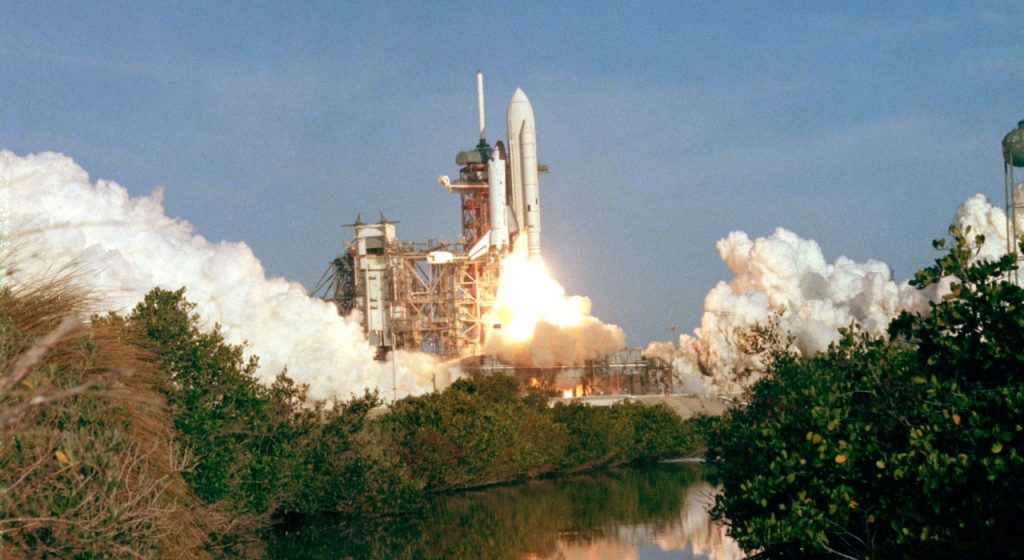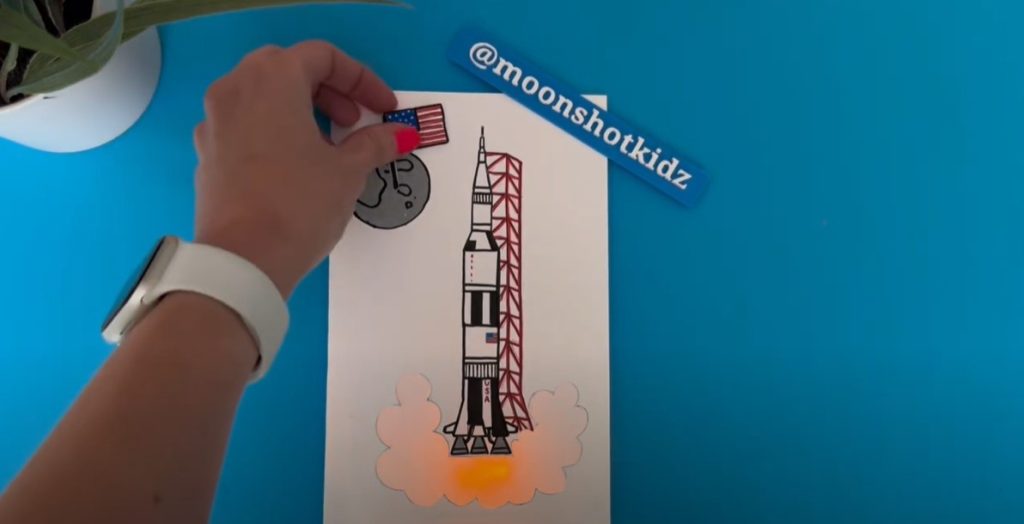[sp name=’NewHorizons’]
On Jan. 19, 2006 New Horizons launched! It was the first mission to the Pluto System and the Kuiper Belt.
Learn More About the Launch
In this image: From among four lightning masts surrounding the launch pad, NASA’s New Horizons spacecraft lifted off the launch pad aboard an Atlas V rocket spewing flames and smoke. Liftoff was on time at 2 p.m. EST from Complex 41 on Cape Canaveral Air Force Station in Florida.
The compact, 1,050-pound piano-sized probe got a boost from a kick-stage solid propellant motor for its journey to Pluto. New Horizons was at the time the fastest spacecraft ever launched, reaching lunar orbit distance in just nine hours and passing Jupiter 13 months later.
The New Horizons science payload included: imaging infrared and ultraviolet spectrometers, a multi-color camera, a long-range telescopic camera, two particle spectrometers, a space-dust detector and a radio science experiment.
New Horizons flew past Jupiter in early 2007, using the planet’s gravity as a slingshot toward Pluto. That flyby saved years off the time for the trip to Pluto. It also provided opportunities to test the spacecraft’s instruments and flyby capabilities on the Jupiter system.
Solve space by unscrambling this image of its launch.
Learn More About the Mission
Learn more fun facts about New Horizons:
- It swung past Jupiter for a gravity boost and scientific studies in February 2007, and conducted a six-month-long reconnaissance flyby study of Pluto and its moons that started in early 2015. Pluto closest approach occured on July 14, 2015.
- The Johns Hopkins University Applied Physics Laboratory (APL) in Laurel, Maryland, designed, built, and operates the New Horizons spacecraft and manages the mission for NASA’s Science Mission Directorate.
- The dust counter was designed and built by students at the University of Colorado, Boulder.
- Using Hubble Space Telescope images, New Horizons team members discovered four previously unknown moons of Pluto: Nix, Hydra, Styx and Kerberos.
- A close-up look at these worlds from a spacecraft promises to tell an incredible story about the origins and outskirts of our solar system. New Horizons explored – for the first time – how ice dwarf planets like Pluto and Kuiper Belt bodies have evolved over time.
Follow New Horizons and its discoveries, such as “New Horizons Spacecraft Answers Question: How Dark Is Space?“






